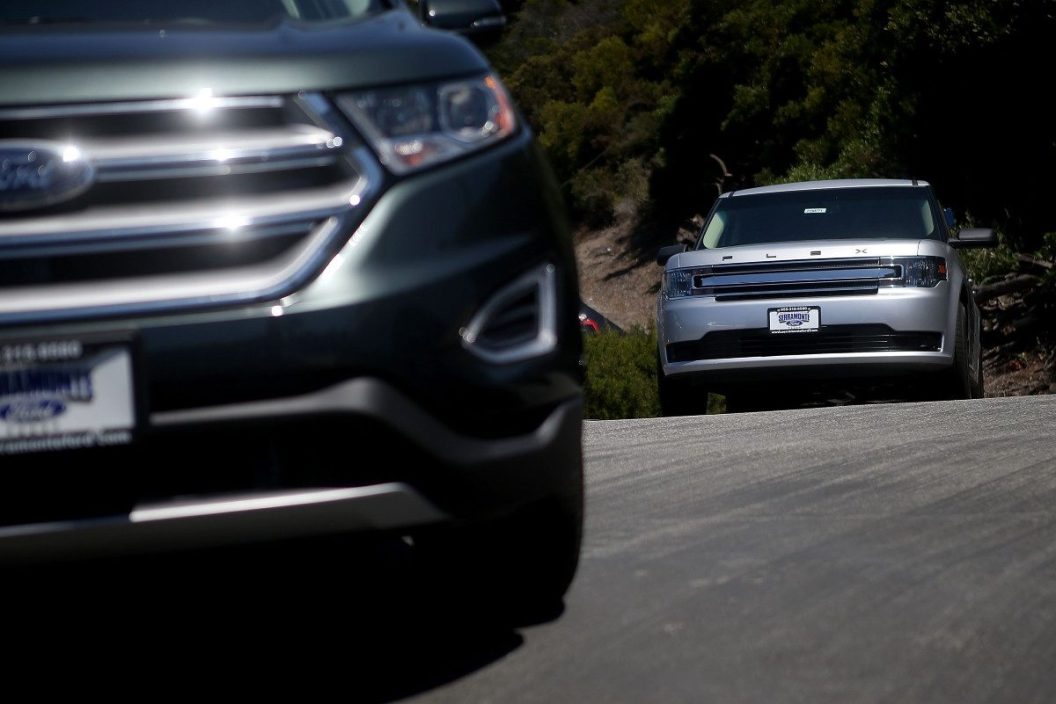In 2008, the full-size crossover SUV with the boxy body style known as the Ford Flex went into production. Ford announced back in November 2019 that it would killing off the Flex, which had a cult-like following, but failed to put up sufficient sales numbers over the past few years.
Why Was the Ford Flex Discontinued?
In an official statement, Ford Motor Company said that the Flex's discontinuation is part of the automaker's "plan to strengthen its focus on products in the heart of the fastest-growing segments." The statement added that the Flex "gained a loyal following as a stylish, roomy wagon blending sport/utility vehicle and minivan capability in a low-slung retro-inspired package."
Ford decision to discontinue the Flex was also part of its plan to bring in newer SUVs, such as the Ford Bronco revival and an electric crossover/Tesla killer inspired by the Mustang.
"People who own the Flex love it, but it became almost a cult vehicle and the numbers were just too small," Michelle Krebs, an analyst at car-buying site Autotrader, told USA Today.
The Flex also struggled in a saturated market of three-row SUVs, with the Volkswagen Atlas, the Kia Telluride, and the Hyundai Palisade all debuting in the last few years.
"There's so much competition, you're going to see vicious battles," Krebs added.
Ford sold more than 296,000 units of the Flex, which is built at the Oakville assembly plant in Ontario, Canada, alongside the Ford Edge and Lincoln Nautilus.
Read More: Chevrolet vs. Toyota Tug of War: Place Your Bets on the Winner
Ford Flex Trim Levels
First unveiled at the 2007 New York International Auto Show, the Ford Flex went into production in 2008 and debuted for the 2009 model year. Its styling was based on the Ford D4 platform, while the Flex's chassis shares its underpinnings with the 2005-2007 Ford Freestyle, 2008-2009 Ford Taurus X, and the 2012-present Ford Explorer.
The Flex was launched with three trim levels: the base SE, the mid-level SEL, and the premium Limited.
The Ford Flex SE
The SE trim level is only available with front-wheel drive and comes with a Duratec 3.5-liter V6 engine. It is equipped with such features as six-speed automatic transmission, a six-speaker audio system, aluminum interior trim panels, and keyless entry.
The Ford Flex SEL
Available in either FWD or AWD, the SEL trim level added an A/M-F/M stereo with satellite radio, Ford SYNC (an in-vehicle communications/entertainment system that is bluetooth accessible, smartphone compatible, and was later upgraded to the Ford Sync 3), a seven-speaker audio system, a security system, and automatically controlled two-row air conditioning.
The Ford Flex Limited
The Limited trim level offered the following upgrades: heated and ventilated dual front seats, a GPS navigation system, a dual-panel panoramic moonroof, a Sony premium surround-sound audio, push-button ignition and remote start, rear-view cameras, and a special driver's memory system.
2009-2012 Model Years
When they were first introduced, Flexes were equipped with either six or seven-passenger seating configurations, with the seven-passenger vehicles including bench seats for the second-row seats.
In 2010, a 355 hp twin-turbocharged EcoBoost V6 powertrain, boasting a 4,500-lb towing capacity, became available for all-wheel drive models. In 2012, an optional automatic parking system for upper-trim models was introduced and included parking sensors and blind spot detection.
2013-2019 Models Years
For the 2013 model year, major body upgrades were introduced, including a single-bar grille with FLEX spelled out above it. The Flex's dashboard was also updated, and a new three-spoke steering wheel was added.
In 2015, the Ford Flex saw a sharp decline in sales and could never really recover.
This post was originally published on November 4, 2019.
